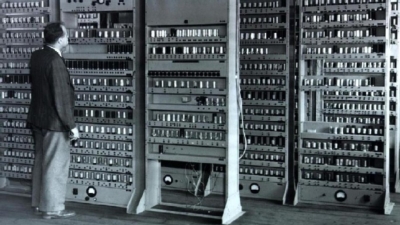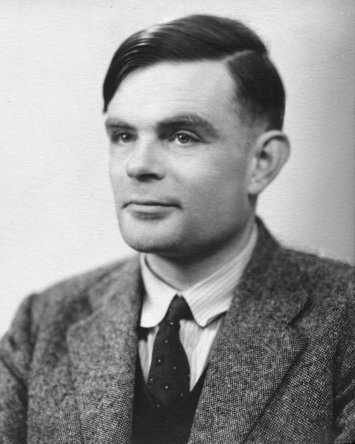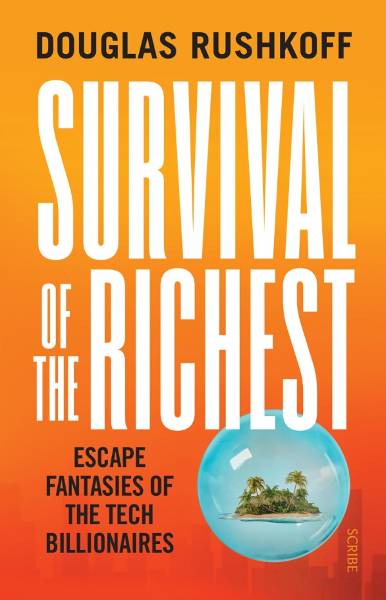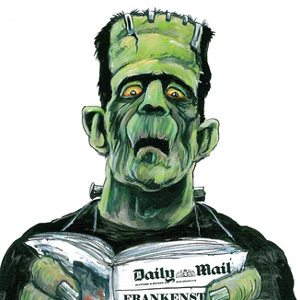
Founded with a $5 million donation in 1930, the IAS only existed on paper during its first two years. It was envisioned as “a paradise for scholars who, like poets and musicians, have won the right to do as they please”. Albert Einstein had earned that right long before he arrived at the IAS in 1933 and found Princeton to be “a quaint and ceremonious little village of puny demigods on stilts”. One who certainly wasn’t puny was his new colleague, John von Neumann, the Hungarian-born polymath.
Aided by a remarkable memory, the gifted von Neumann made seminal contributions in fields that ranged from game theory to quantum mechanics. He would also be instrumental in formulating the no-win nuclear strategy of mutually assured destruction, MAD. And despite its title, Turing’s Cathedral, von Neumann is the central figure in Dyson’s book on the origins of the digital universe because beginning in November 1945, it was he who assembled and led a team of engineers and mathematicians at the IAS in designing and building a programmable electronic digital computer.
By 1951, after five years of work, the Mathematical and Numerical Integrator and Computer, or MANIAC, was fully functioning. It was 6 feet high, 2 feet wide and 8 feet long and weighed-in at over a thousand pounds.Its 5 kilobytes memory was only enough, Dyson points out, for about half a second of audio at the rate we now compress music into MP3s. Yet he argues persuasively that today’s rapidly expanding digital universe can be traced directly to the machine von Neumann’s team constructed, in half the time, Dyson notes dryly, it took him to research and write his book.
What distinguished MANIAC from other early machines was a memory matrix that could be accessed at the speed of light and that made a huge difference in what it could do. MANIAC was soon running programs on the nuclear explosions, shock and blast waves that were the real impetus behind its creation as the American military raced to construct a hydrogen bomb at start of the Cold War. The computer simulations were subsequently confirmed by live H-bomb tests in the South Pacific in November 1952 and February 1954.
“The only difference that makes a difference to a digital computer is the difference between a zero and one,” explains Dyson. “The history of digital computing can be divided into an Old Testament whose prophets, led by Leibniz, supplied the logic, and a New Testament whose prophets, led by von Neumann, built machines,” says Dyson. “Alan Turing arrived in between.”

By the time Turing saw a proof copy of his paper in September 1936 he had been in America only a week after having swapped Cambridge for Princeton to undertake his doctoral studies. He shared offices in the same building as von Neumann. There is little direct evidence of their encounters, by Dyson is convinced that “they must have had some meaningful interactions, either directly or indirectly, during the war. Turing's mother says he went to Princeton during his wartime visit to the USA, and von Neumann credits a visit to England for sparking his interest in computer programming, but we don't really know the details.” It is known that once he completed his PhD in 1938, von Neumann offered Turing a job at the IAS, but he preferred to return home as war loomed in Europe.
In September 1939 Turing’s exceptional mathematical talent took him to a country estate in Buckinghamshire, Bletchley Park, the top secret home of Britain’s code breakers as cryptography and cryptanalysis became even more critical than physics to the course of the war. By 1941 U-boats were crippling Britain’s transatlantic supply lines. Breaking the Germany Navy’s Enigma code was a top priority, but it was so complex that the chances of winning the lottery are far greater. Against those odds, as Dyson skilfully explains, Turing succeeded.
The award of the OBE in 1946 was the only acknowledgement that Turing received because the Official Secrets Act meant the wartime code breakers could never publicly discuss their work. It was only with the declassification of documents in the 1970s that extent of Turing’s contribution in cracking the German naval code began receiving the wider recognition that it merited. Alan Turing: The Enigma, the biography written in 1983 by the Oxford mathematician Andrew Hodges “deserves huge credit” says Dyson.” Without his biography, I don’t see how a coherent picture of Turing’s life and contributions would have emerged. We might have got it in pieces, but Hodges gave us the whole thing.”
By 1945 Turing had devised a concrete plan of his own for building a computer. He was unable to implement it after the war because the National Physical Laboratory, where he worked, had only a fraction of the resources available to von Neumann’s team. In 1948 a frustrated Turing left for a post at Manchester University where he found some familiar faces from Bletchley Park who in June that year had constructed the first working stored-program computer.
Increasingly interested in similarities and differences between machines and brains, Turing published another seminal paper “Computing machines and intelligence” in 1950, in which he proposed what became known as the “Turing test”. As far as he was concerned if a computer acted, reacted and interacted like a sentiment being, then it should be regarded as sentient. So Turing proposed the “imitation game” – if a computer was able to answer questions posed by a human interrogator in such a way as to convince them that the answers were given by a human, then the computer could be said to “think”, to possess intelligence.
Turing also became increasingly interested in applying mathematics to biological forms and in 1952 published the first part of his study into the development of pattern and form in living organisms. But on 31 March that year Turing was convicted of gross indecency. Some months earlier he had admitted to a homosexual affair under police questioning, after reporting that his home had been burgled.To avoid jail he agreed to oestrogen injections for a year that caused the once lean long-distance runner to develop breasts. In June 1954 Turing was found dead by his housekeeper. He had committed suicide by eating an apple laced with cyanide.
In September 2009, Prime Minister Gordon Brown issued an apology on behalf of the British government for the “inhumane” treatment handed out to Turing. Denied a posthumous pardon, there is a growing campaign during this centenary year of his birth for Turing’s portrait to appear on a redesigned £10 bank note. Given his personal history and family association with the IAS, Dyson naturally focuses on the achievements and personnel of von Neumann’s group but his title acknowledges Turing’s place in the origins of the digital universe. “It was all based on Turing’s idea,” insists Dyson, “No one else laid the foundations of the resulting cathedral as brilliantly and solidly as he did” Von Neumann may have been the architect, but he was working from Turing’s theoretical blueprint.
Turing’s Cathedral: The Origins of the Digital Universe by George Dyson is published by Alan Lane

